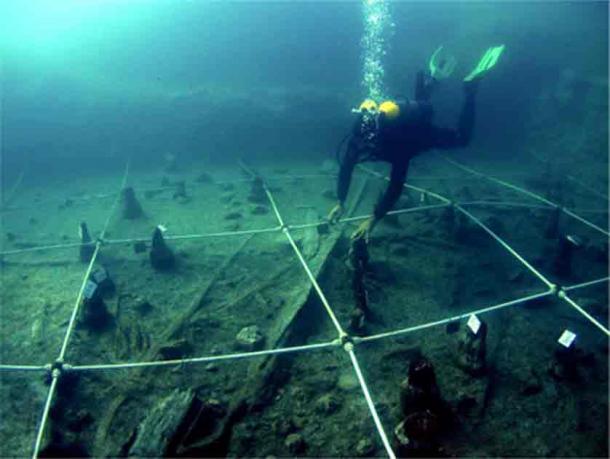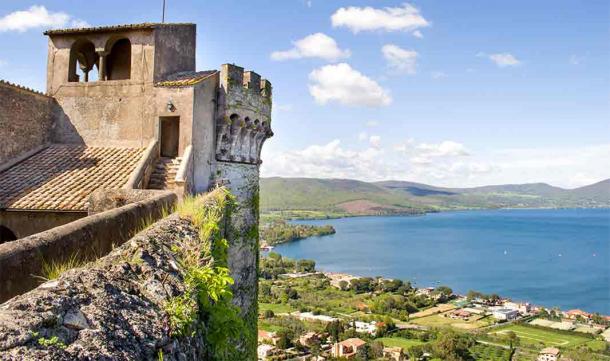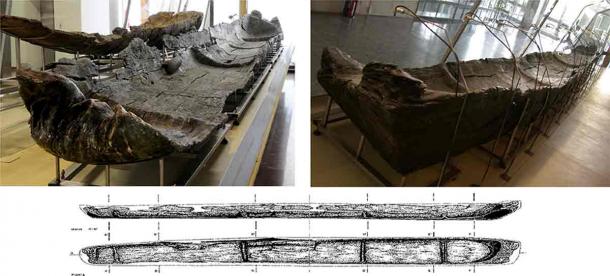
Earliest Neolithic Boats Found in Mediterranean Date Back to 5,000 BC
Archaeologists and historians from prominent institutions in Spain and Italy have recently published their findings on five ancient dugout canoes retrieved from La Marmotta, an Italian archaeological site nestled in the Mediterranean basin. Through comprehensive scientific analysis, the researchers determined that these vessels date back over 7,000 years, marking them as the earliest Neolithic boats discovered in the area.
The significance of these earliest Neolithic boats goes beyond mere antiquity. Not only do they provide insights into ancient maritime practices, but they also underscore the remarkable ingenuity and maritime prowess of ancient civilizations. With their robust construction and evident seaworthiness, these canoes hint at the possibility of ancient seafaring communities being able to sail across the Mediterranean Sea itself, which would have been no small accomplishment that far in the past.
- Europe’s Famous Mesolithic Pesse Canoe: Earth’s Oldest Known Boat
- Oldest and First ‘Wampo’ Ritual Canoe Burial Found in Argentina

Excavation of one of the oldest Neolithic boats ever found, labeled Canoe 5. (Gibaja et al., 2024 / PLOS ONE / CC-BY 4.0)
“Direct dating of Neolithic canoes from La Marmotta reveals them to be the oldest in the Mediterranean, offering invaluable insights into Neolithic navigation,” the study authors stated in a new article about their research appearing in PLOS ONE. “This study reveals the amazing technological sophistication of early agricultural and pastoral communities, highlighting their woodworking skills and the construction of complex vessels.”
The now sunken village of La Marmotta can be found in the shallow waters of ltaly’s Lake Bracciano, which is 30 miles (50 kilometers) northwest of Rome and 18 miles (30 kilometers) from Italy’s Mediterranean seacoast. While this lake is not directly connected to the Mediterranean, it is close enough to assume that boats floated there could have also been carried to the coast for seafaring navigation.

Lake Bracciano, where the now sunken village of La Marmotta was discovered, as seen from Bracciano Castle. It was here that archaeologists unearthed the oldest Neolithic boats. (Luca Lorenzelli / Adobe Stock)
Exploring the World: Earliest Neolithic Canoe Unveils Boatbuilding Culture
In the modern age, people tend to think of canoes as a relatively simple form of boat, one that is limited in terms of its capacity for long-distance travel. But this perspective doesn’t hold up when applied to the technology and lifestyles of people who lived several thousand years ago. In that context, canoes built for multiple occupants represent a major innovation and a significant development in the history of nautical transportation.
“The dugout canoes at La Marmotta are undoubtedly exceptional examples of prehistoric boats and nautical systems,” the study authors confirm in their PLOS ONE paper which presented their research into these earliest Neolithic boats. “Their size, the other elements associated with them, and the variety of tree species make this site a compulsory point of reference in any discussion on the neolithization process around the Mediterranean Sea and the origins of sailing.”
When using the term “neolithization process” the authors are referring to the spread of Neolithic civilization, and the agricultural revolution it ushered in, throughout the greater Mediterranean region. Many of the European civilizations that rose to prominence over the past several thousand years originated along the Mediterranean coast, and there is no question that Neolithic peoples were responsible for much of the activity that led to new settlements in previously unexplored areas. Seagoing quests were undoubtedly a major part of the exploration process.
The invention of water craft capable of navigating the Mediterranean safely would have had a dramatic impact on migration in ancient times. “These canoes at La Marmotta, and the occupation of many islands in the eastern and central Mediterranean during the Mesolithic and particularly the early Neolithic periods, are irrefutable proof of the ability of those societies to travel across the water,” the study authors wrote. “This technology was an essential part in the success of their expansion, bearing in mind that in a few millennia they occupied the whole Mediterranean from Cyprus to the Atlantic seaboard of the Iberian Peninsula.”

Canoe Marmotta 1, on display in the Museo delle Cività in Rome. (Gibaja et al., 2024 / PLOS ONE / CC-BY 4.0)
Determining the Age of the Earliest Neolithic Boats
Through the application of radiocarbon dating techniques, the researchers were able to date the well-preserved wood used to make the canoes to between 5,700 and 5,100 BC. They are called dugout canoes because they were made by cutting and carving out parts of fallen trees to create a craft with a hollowed-out middle.
But the canoes were more elaborate than this description would suggest. They featured transverse or crosswise wooden reinforcements designed to make them sturdier and stronger. One of the canoes even included wooden planks that included holes for ropes that would have been tied to sails. The canoes were clearly designed to be navigated across more challenging waters than those associated with placid lakes, which would have been necessary if they were to be sailed on the Mediterranean.
Adding further proof to this assumption, stone tools found during excavations at La Marmotta matched tools discovered on some nearby Mediterranean islands. This demonstrates that the culture of the Neolithic boatbuilders had reached these destinations, which may have been used as launching points for seafaring expeditions searching for even more distant shores.
- Huge and Extremely Ancient Intact Canoe Recovered From Swiss Lake
- Delighted Maori Recover ‘Hidden’ Waka Canoe in New Zealand River
It is notable that the islands visited by early Neolithic sailors had in some cases been visited by Mesolithic period explorers as well. The Mesolithic lasted from 10,000 to 8,000 BC, which shows that the canoe architects of La Marmotta were likely working within the confines of a well-established boat building culture.
It is easy to imagine an experimental approach to boatbuilding during these long-lost times, where people started by taking canoes originally designed for lake or river travel out onto the Mediterranean to see how far they could go. These efforts would have spurred innovations designed to solve the navigation or sailing problems that arose, and that process would have eventually produced canoes suitable for travel across the world’s largest inland sea.
Are There Even More Ancient Vessels in the Mediterranean?
There is a possibility that these are not the earliest Neolithic boats ever made, but that older seaworthy canoes may be found in the Mediterranean basin eventually. This is not guaranteed, however, since the submergence of La Marmotta beneath the waters of Lake Bracciano created the conditions necessary to ensure its wooden boats could be preserved indefinitely. At Neolithic or Mesolithic sites that were not flooded, any wooden canoes and other boats that were left lying around would have decayed completely and disappeared long ago.
It is certainly possible that rising sea levels, or rising lake levels like those that eventually sunk La Marmotta, may have submerged other ancient coastal settlements in the Mediterranean basin. If such sites exist and are one day discovered, they too might hold well-preserved wooden vessels that would further illuminate the history of seaborne transport on the waters of the Mediterranean in prehistoric times.
Top image: Left; Excavation of one of the oldest Neolithic boats ever found, labeled Canoe 5. Right; Canoe Marmotta 1, on display in the Museo delle Cività in Rome. Source: Gibaja et al., 2024 / PLOS ONE / CC-BY 4.0
By Nathan Falde
References
Gibaja JF, Mineo M, Santos FJ, Morell B, Caruso-Fermé L, Remolins G, et al. 20 March 2024. “ The first Neolithic boats in the Mediterranean: The settlement of La Marmotta (Anguillara Sabazia, Lazio, Italy)” in PLoS ONE 19(3): e0299765. https://doi.org/10.1371/journal.pone.0299765















